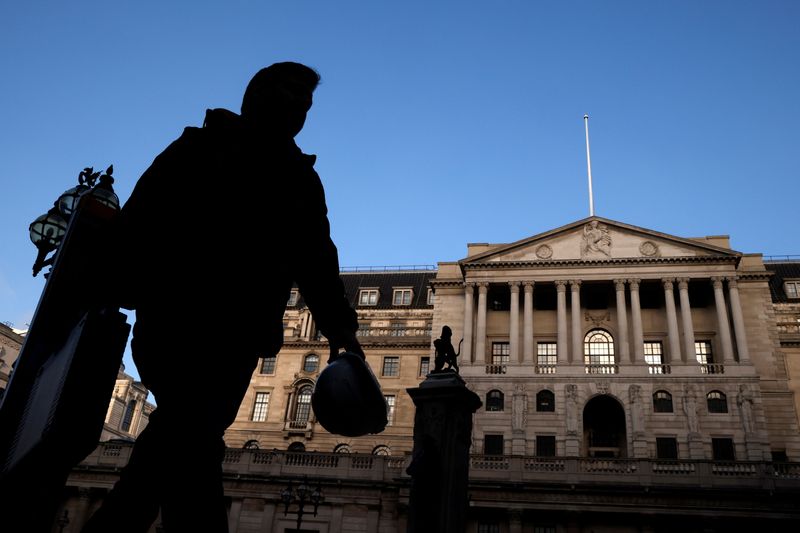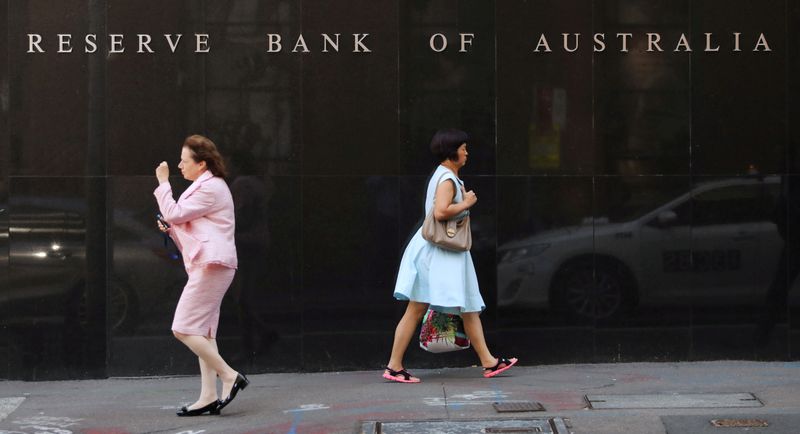LONDON (Reuters) – As the British and Australian central banks prepare to crank up their money-printing presses and the U.S. election outcome ups the pressure for more Federal Reserve action, one thing is clear — already-scarce government bonds will get harder to find.
This week, the Bank of England increased its bond-buying by a bigger-than-expected 150 billion pounds ($195 billion), while the Reserve Bank of Australia said it would buy $100 billion ($70.4 billion) in debt over the next six months.
The aggressive moves build on this year’s accelerated stimulus from central banks, which are battling the COVID-19 shock and uncertainties ranging from Brexit to doubts over the scale of government spending.
Graphic: Central bank balance sheets swell – https://fingfx.thomsonreuters.com/gfx/mkt/xklvymajkvg/Pasted%20image%201604589866870.png
Now, amid fading prospects of a Democrat U.S. election sweep and a government spending splurge, some economists speculate the Fed might have to step up purchases of long-dated Treasuries to keep stimulus flowing.
And the takeaway is that even as governments borrow more, the bond free-float — what’s available to investors — will be squeezed further.
Gary Kirk, portfolio manager at TwentyFour Asset Management, said years of ultra-loose monetary policy are a certainty, even before the Fed announcement this year that even an inflation target overshoot would not trigger immediate action.
“This, combined with asset purchases running for at least the next year, in our view means we can expect the demand for fixed income – from sovereigns through to speculative-grade credit – to outstrip supply, resulting in yield becoming an ever more scarce commodity,” Kirk said.
One could argue such programmes aim precisely at that –making government bonds less attractive so investors are induced to lend to private companies via stock and credit markets.
The downside, though, is it removes much of the liquid, high-quality assets long-term investors such as insurers must hold to offset their liabilities. It also deprives portfolios of the hedge provided by “safe” sovereign bonds.
Patrick Krizan, an economist at Allianz Research, tweeted earlier this week that central banks now hold more than 50% of outstanding G4 sovereign bonds, with those in the euro zone and Japan snapping up over 70% of new debt issuance.
Analysts at Citi predicted the squeeze in euro debt markets would become more pronounced after the European Central Bank stepped up quantitative easing next month, as anticipated.
Based on projected budget deficits and ECB buying, Citi estimated the amount of euro-denominated bonds in private hands would shrink by about 750 billion euros in 2021, or 5% of the outstanding total.
“That is a larger amount than we have ever seen before. By comparison, the shrinkage we estimate for 2020 is only around 460 billion euros,” Citi said in a note.
The bank expects no growth in the volume of bonds outstanding available across major advanced economies to private investors next year – similar to 2016, the year heavy ECB bond buying squeezed private investors out of short-dated debt.
LESS EXTREME
The BOE, Fed, ECB and the Bank of Japan last month upped bond purchases by $460 billion, almost four-fold from September. Still, central bank buying is not yet outstripping British and U.S. supply – the Fed for instance holds around 20% of the $20 trillion Treasury market.
Graphic: Fed’s share of Treasury market – https://fingfx.thomsonreuters.com/gfx/mkt/xklvymaxwvg/Pasted%20image%201604649461640.png
“I do not expect the Federal Reserve to absorb more than net supply coming online next year. The size of the U.S. fiscal programme is unique – they won’t buy all of that,” said Guy LeBas, chief fixed income strategist at Janney Montgomery Scott.
But more broadly, the impact of central bank buying may be significant in the months ahead.
Justin Onuekwusi, portfolio manager at LGIM, said central bank buying not only reduced but also crushed bond volatility, limiting investors’ hedging options.
“Volatility is falling, which means the protection you get from bonds is a lot less than historically,” he said.
The impact was evident in October’s European Union debt issue, which attracted bids of 233 billion euros ($275 billion) – the highest ever for any bond sale
Finally, southern European borrowing costs have taken another lurch lower, as more investors plunge into higher-yielding markets. Italian five-year yields have turned negative, so it may be just a matter of time before long-dated Spanish and Portuguese bonds follow.
(This story refiles to make clear currency in Australian dollars in paragraph 2)
(Reporting by Dhara Ranasinghe and Sujta Rao; Additional reporting by Elizabeth Howcroft and Abhinav Ramnarayan)



















